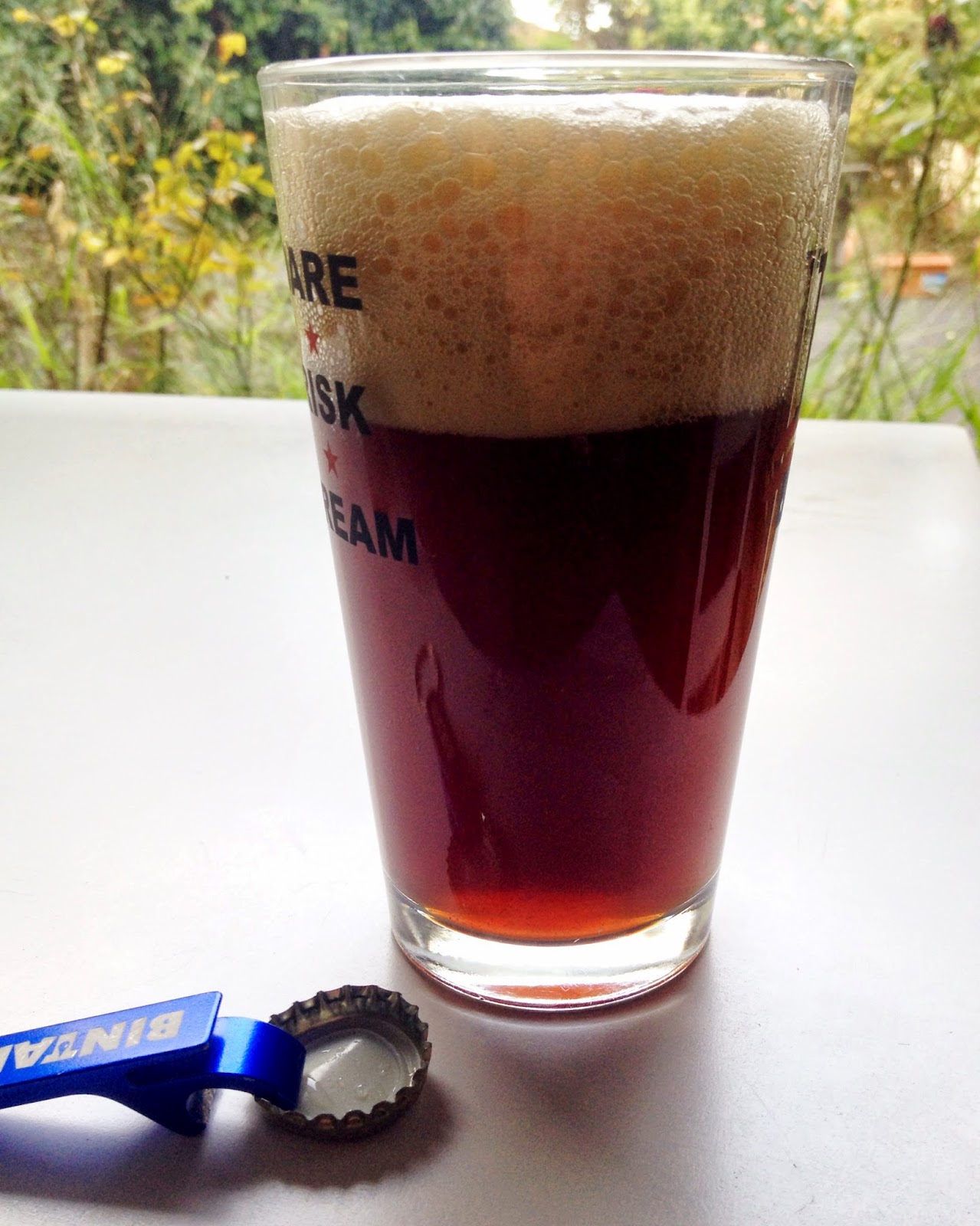Aroma: starts with cocoa when it's cool but as it warms it brings a fairly strong cherry aroma that verges on Dr Pepper. There's also tobacco, some earthiness, musk, roast and sweet malt. Very inviting.
Appearance: Blacker than black. Slight hint of red on the edges that shows it's very clear even though it's pretty much entirely opaque. Thin but dense head that lingers.
Flavour: very full flavoured! There's a roast flavour that you'd expect from a beer with heaps of black and brown malt but it's balanced with quite a significant amount of hop flavour, a mix of tobacco, herbal and something else, woody is the adjective I have but it doesn't quite do the job. There's also a malty sweetness that manages to avoid being too cloying. There's also a decent bitterness there but it isn't oppressive at all.
Mouthfeel: the carbonation is intentionally fairly low and it works well for this beer. I'd probably be reasonably happy drinking this one without any carbonation at all. Very full, smooth body. Some dryness from tannins and lingering bitterness in the back but nothing too crazy.
 |
| People in the 1830s had some delicious beer to drink |
To me porter is one of those tricky styles; easy to brew a solid version but really hard to brew something memorable. I think it's often that they lack nuance and depth. That makes this beer all the more impressive because it's crazy delicious and complex! I'd love it if a local brewery produced this regularly - I'd be a happy customer. They really knew what they were doing back in the 1830s, at least when it came to brewing porter. I've got a bunch of other recipes from Shut Up About Barclay Perkins and this has inspired me to keep working through the list.
Just about every part of this beer has been turned up to 11 and yet somehow the result is balanced. The epic level of bitterness is there but so is a balancing body and sweetness, the aroma is huge and the crazy amount of black and brown malt manages to sit alongside and complement the hop flavour. Even better, at only 5.6% it's a pretty extreme beer that remains easily drinkable and doesn't do too much damage. With the nights lengthening and the cold of winter approaching it's going to be nice to have some of this to keep me going.
I didn't quite hit the target OG of 1.066 and FG of 1.022 but it wasn't too far off with 1.065 and 1.023. The huge body that comes from the residual sugars means that the crazy 82ish IBUs isn't an overwhelming, mouth destroying bitterness but merely a pretty hefty but balanced addition to the beer. I suspect that if others brewed the beer and achieved a higher level of attenuation the beer would take quite a while to age into the high hop levels. I used WY1028 because it was the English yeast I had on hand and as far as I can tell it worked superbly but I'm interested in what other people used. I was a bit worried that it would attenuate the beer too much but in the end it only achieved 63.2% apparent attenuation rather than the 73-77% advertised - I guess that's what mashing at 69C gets you.
Given the differences between the ingredients then and now - Maris Otter is a new variety of barley, Fuggles a newer hop variety than this recipe, brown malt is a different beast today and hops are dried quickly and stored cold - it's hard to know how much this beer has in common with the original version. The history nerd in me would like to try a truly authentic version but the drinker in me is very happy with the version in my glass.
Next time: I'm not sure if any changes are actually necessary. I would be interested to try a couple of different strains of yeast and maybe East Kent Goldings but that's really just to see what happens rather than because anything needs to be different.
Thanks Velky Al for arranging this project! Consider me locked in for next year's brew whatever it will be. It's been fun to be part of things and I'm looking forward to reading about how everyone else went with theirs.
















